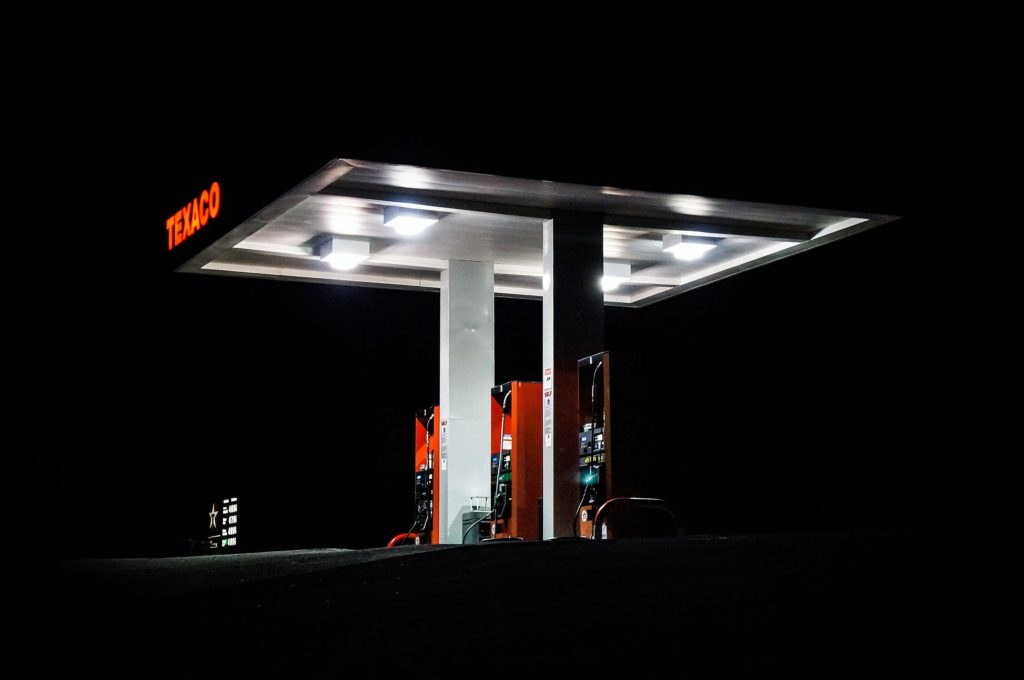Fuel expenses are difficult to track and control.
Even with fuel cards, it can be difficult to monitor fuel consumption for individual vehicles. On average, a Class 8 Truck will consume around $2000 of fuel a week, fluctuating for a variety of reasons. Fuel consumption can vary due to road conditions. Rough, windy roads can lower the fuel efficiency of a vehicle significantly. When a driver is travelling across the entire country, it can be almost impossible to work out the ‘correct’ amount of fuel consumption a truck should be aiming for.
Factors such as driving habits and mechanical faults can also affect consumption, making it difficult to determine whether diesel theft has even occurred during the driver’s journey.
Why does diesel theft occur?
As with any crime, diesel theft ultimately results due to money. Drivers, fuel station staff and outside thieves can easily earn a few hundred extra a week through stealing small amounts of diesel. Because Class 8 Trucks have such huge fuel tanks, it’s easy to pass by undetected. Research has shown that about 8% of diesel is stolen from trucks on average, resulting in an average weekly loss of $160 per vehicle.

How does it happen?
To solve the problem, we first need to understand HOW diesel is stolen. Theft generally comes under two main categories:
- Fuel Card Misuse
- Fuel Siphoning
All drivers have a fuel card they can fuel up with whenever they need. This is the most common scenario in which diesel is stolen – and works because the company is ignorant of two main factors. They are unable to know whether fuel was purchased for the company truck or another truck. And the second reason, there is no guarantee the fuel purchased actually went into the company truck. There’s always a chance the driver has put 90% of the fuel into the truck and the remaining 10% into a jerry can to onsell.
This is a HUGE problem. Studies have shown that 20% of US-based trucking companies have evidence that employees have been involved in diesel theft and fuel card fraud.
Fuel siphoning is the 2nd most common reason behind fuel card fraud. Trucks are often left unattended in parking lots with limited surveillance, which can result in thieves siphoning diesel directly out of the truck with pumps. This often happens during the night while the driver is asleep and unaware of what’s happening outside. Thankfully fuel sensors are a great prevention method for this problem
There have been cases where truck drivers have been caught partnering with thieves and siphoning diesel out of tanks themselves. The diesel is then sold onto thieves at highly discounted prices and the truck companies remain oblivious to this.
Who is vulnerable?
Fleets with multiple vehicles are vulnerable to diesel theft, as it can be difficult to closely track multiple drivers. The bigger your fleet, the higher chance of theft and the higher the weekly costs. Companies with Class 8 trucks are especially vulnerable due to their massive engines. As mentioned above, a truck of this size can easily use about $2000 of fuel a week.
Companies with fleet vehicles that travel across the country are also at risk, due to the vast distance each truck has to cover. Drivers will inevitably have to stop at riskier truck stops with an increased chance of fuel siphoning.
Lastly, companies that utilise fuel cards need to be especially mindful of fuel card misuse. To prevent this, you should monitor your employees carefully to track mileage per litre on their vehicles.

How do you prevent fuel theft? Are there any techniques to reduce the risk?
Thankfully as technology increases, it’s becoming more and more difficult for thieves to steal diesel. There are a variety of prevention methods on the market that companies can utilise.
- Locking Fuel Cap
Locking fuel caps are a basic defence against thieves. It prevents access to the fuel tank by a key lock. - Anti-Siphoning Cap
Anti-siphoning caps are made to prevent siphoning of fuel, which blocks pumps from being inserted into the fuel tank. - Fuel Sensors
Fuel sensors can be attached to vehicles to alert the driver if fuel is being used outside of their normal working hours. - Defensive Parking
Teach your drivers to park in ways to prevent access to fuel tanks. This not a concrete defence, but can prevent thieves who will move onto easier targets.

In addition to these prevention techniques, companies can reduce the risk of theft by creating ‘no park’ locations for drivers to abide by. These locations are generally high risk for both cargo and fuel theft, and by avoiding these completely, drivers can minimise potential risk.
Drivers should park in well-lit areas of high visibility, preferably with security. Though these locations can be difficult to find, carefully planned routes can drastically reduce fuel theft.
If a fuel theft occurs, a driver should immediately inform the company, the police and management of the parking location. If you wake up and see ¾ of your tank has gone, then you can know that you’ve been stolen from.
Some final thoughts…
Though diesel theft is a HUGE problem in the trucking industry, there are effective prevention methods that can be taken. Companies that are especially vulnerable, such as those with class 8 trucks, should take every precaution possible to minimise the risk of fuel theft.
Based on an average of $160 lost in stolen fuel a week, a company could expect to save more than $640 monthly per vehicle by utilising the techniques outlined here.
If you have any techniques or methods for minimising the risk of fuel theft, feel free to drop a comment below and let us know how!


